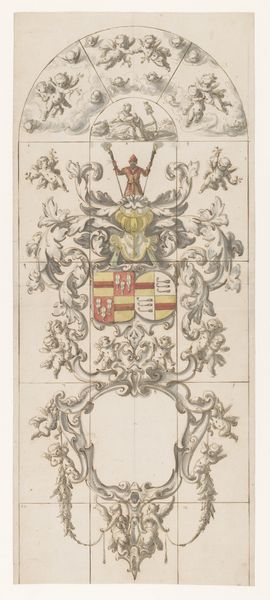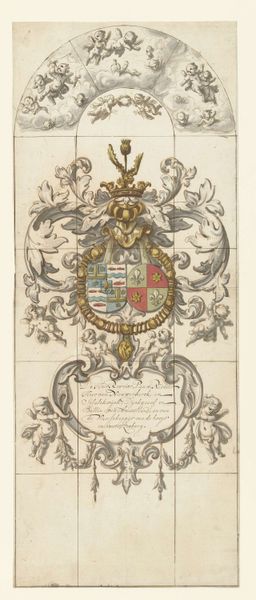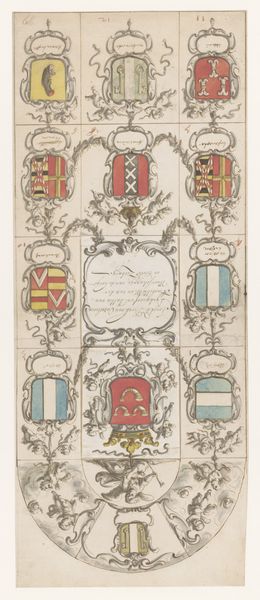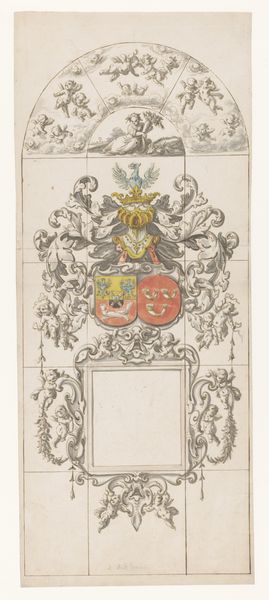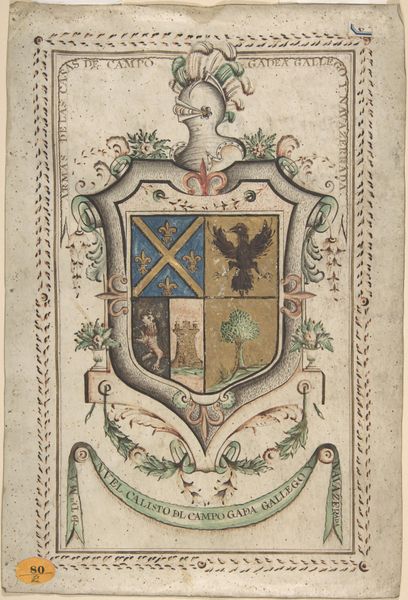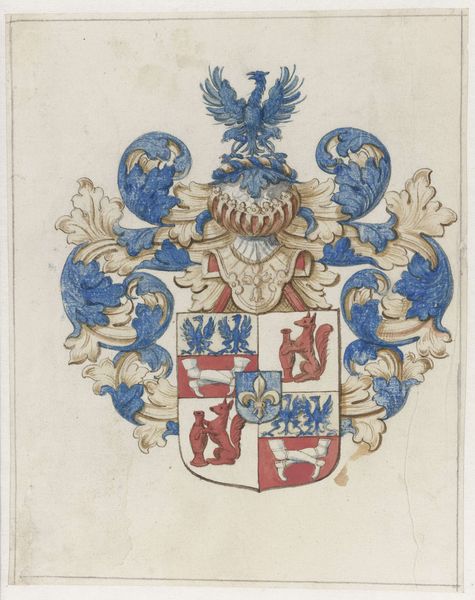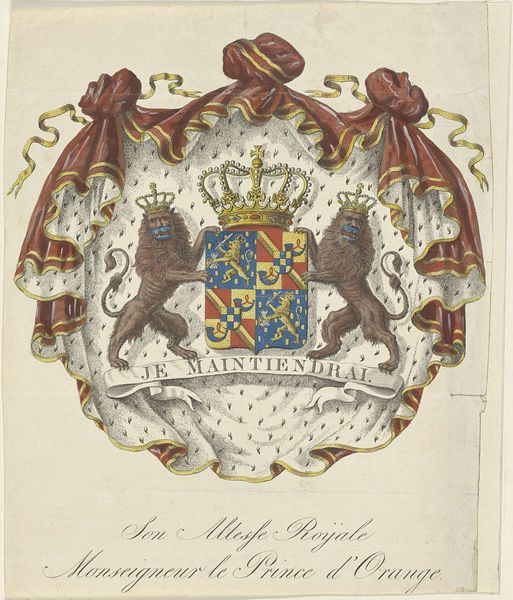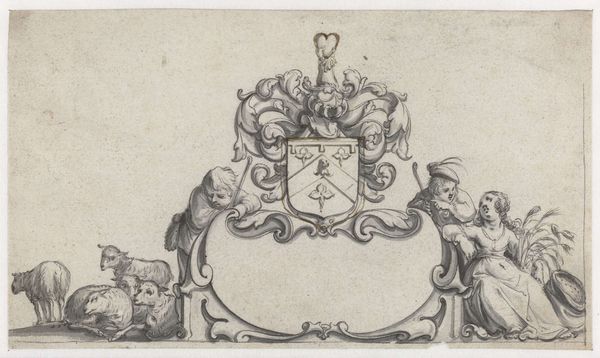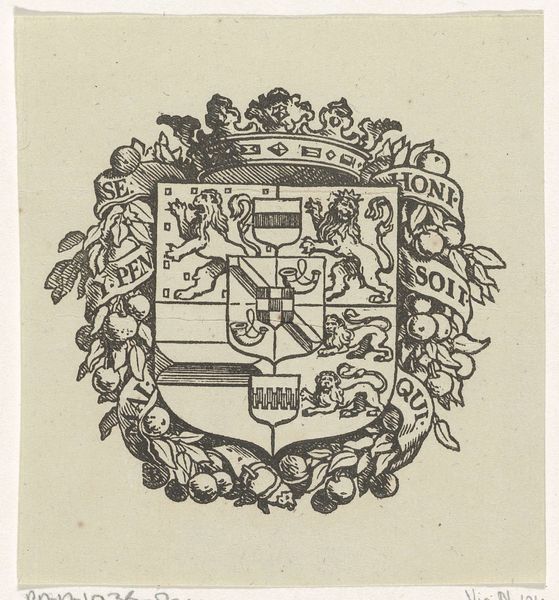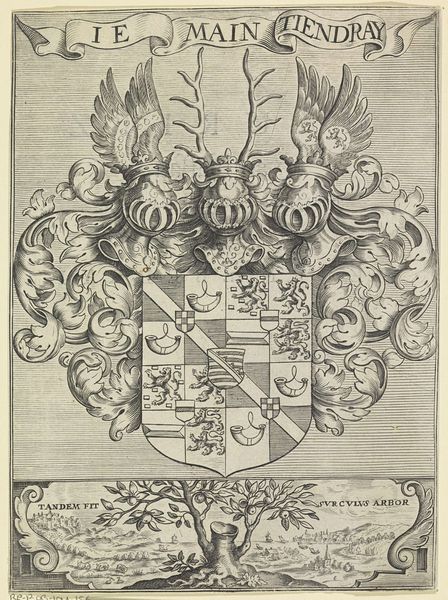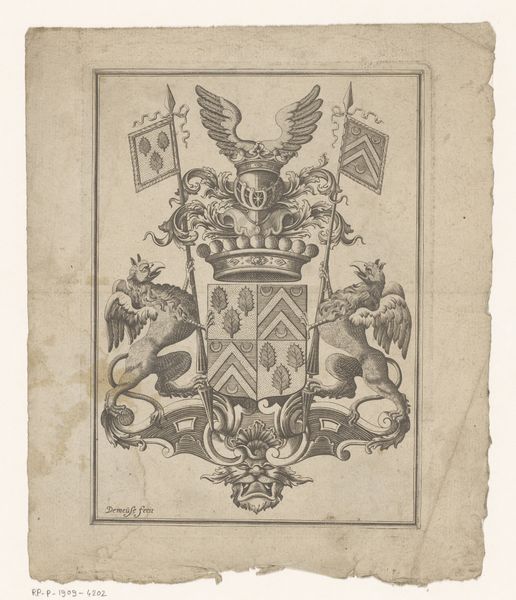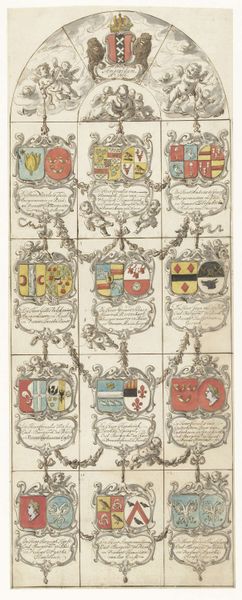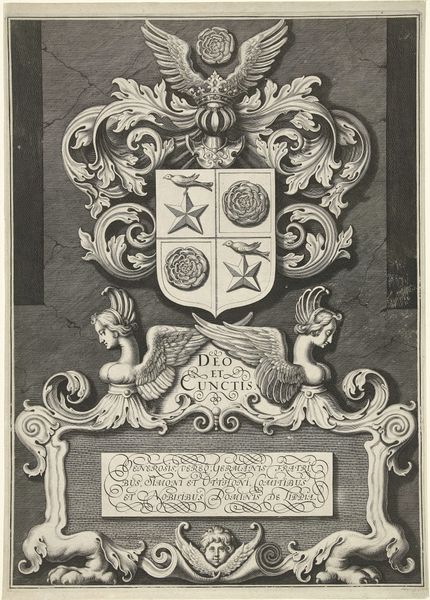
drawing, paper, ink, engraving, mural
#
drawing
#
baroque
#
pen drawing
#
paper
#
ink
#
engraving
#
mural
Dimensions: height 531 mm, width 225 mm
Copyright: Rijks Museum: Open Domain
Curator: Looking at this drawing, the overwhelming impression is one of carefully balanced grandeur. Editor: It's Pieter Jansz.’s “Design for stained-glass window twelve in church at Oudshoorn,” dating from the mid-17th century. Executed in pen, ink, and engraving on paper, it represents the Baroque style at play in Dutch visual culture. It’s really a striking example. Curator: The composition is fascinating, the tiers moving from heavenly imagery to a very earth-bound inscription. Tell me more about that heavenly imagery. All those cherubs aloft! Editor: Those are potent cultural symbols, aren’t they? Angels, personifications of virtues. The overarching semi-circle reads to me as an allegorical firmament, the home of ideals…Justice, for example, shown holding her scales and sword. Curator: I see it now! Justice in the centre, which makes a lot of sense, given its placement directly above the crest. I wonder if those coats-of-arms belong to important families? Perhaps donors to the church? Editor: Good eye. Family crests were powerful statements of identity and legacy in that period. You're right, such commissions would often be funded, at least in part, by families, whose patronage cemented their public standing. In some ways this echoes forward to how museums and galleries today function as public stages. Curator: These angelic figures really animate the design, their presence creating a visual link between the mortal and divine worlds, promising solace, and subtly reinforcing faith. The weight of this symbol-laden imagery feels very particular to the period. Editor: It’s true. And the inscription on the stone tablet below tells the tale. It commemorates "Lord Willem van Croonenburg," honoring his contributions to the Oudshoorn community and the renovation of the church. I imagine its intended impact on a congregation looking up toward it? Pretty powerful stuff. Curator: The Baroque loves such immersive experiences! Pieter Jansz. really understood the theatrical possibilities embedded in visual imagery and how those could instruct. It is still communicating across centuries. Editor: Exactly. It's more than just surface and ornament—it represents a crucial period in Dutch history, and shows the social importance of art in the creation and propagation of cultural memory. Curator: A beautifully detailed statement of enduring personal and collective values, preserved with so much care through art! Editor: It’s really a moment of intersectionality; religion, family identity, and the evolution of Baroque style frozen for a little while for our consideration.
Comments
No comments
Be the first to comment and join the conversation on the ultimate creative platform.
